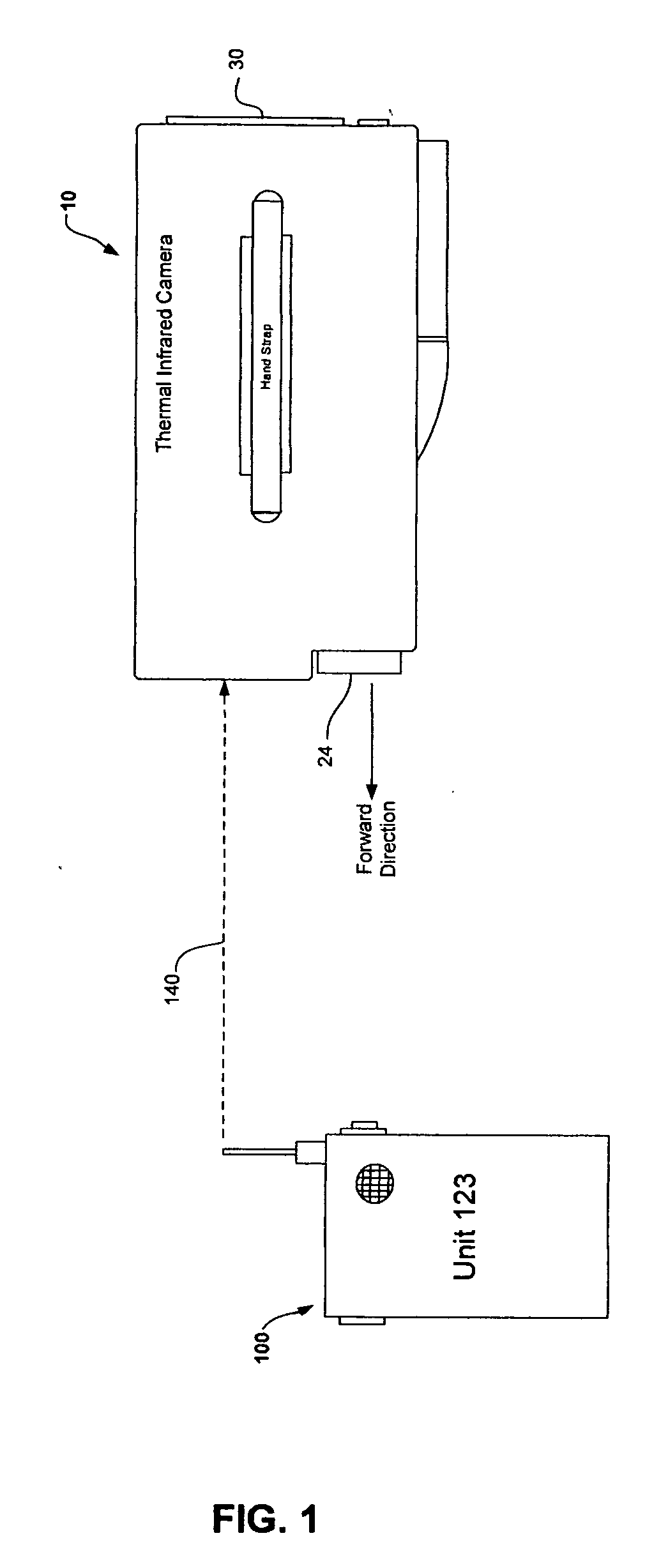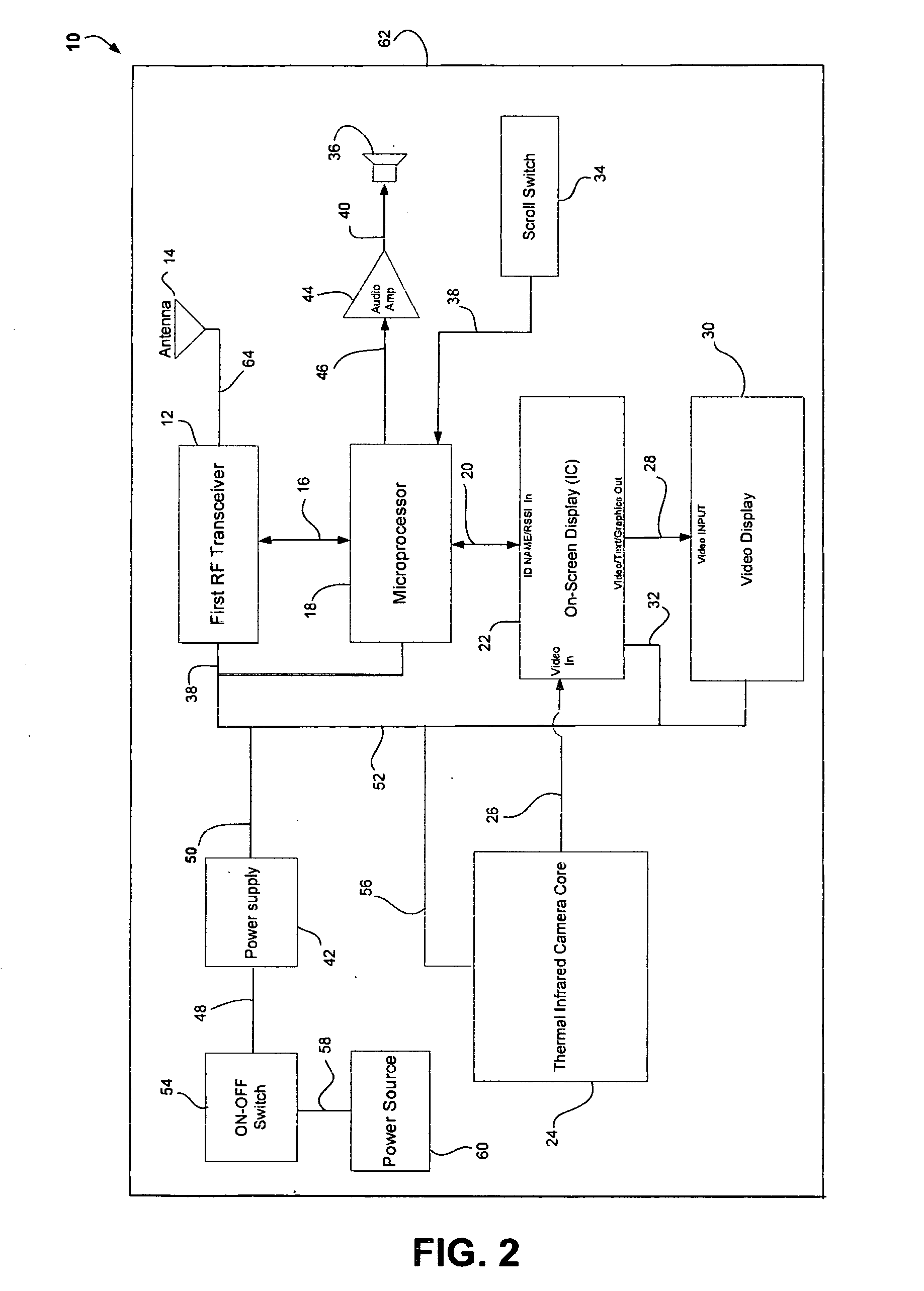Thermal infrared camera tracking system utilizing receive signal strength
a technology of thermal infrared camera and receive signal strength, which is applied in the field of tracking and location, can solve the problems of structural damage, structure or building creating a dangerous environment with limited or no visibility, and not being able to exit the burning structure without assistance, so as to reduce the risk of injury and less time
- Summary
- Abstract
- Description
- Claims
- Application Information
AI Technical Summary
Benefits of technology
Problems solved by technology
Method used
Image
Examples
Embodiment Construction
[0021] Referring to the drawing, fields of applicability of the present invention will become evident from the detailed description and examples provided within the preferred embodiment(s). It should be noted that while indicative of the preferred embodiment(s), the description and examples are intended for the purposes of illustration only and are not intended to limit the scope of the present invention.
[0022] Now referring to FIG.1 is a perspective view of a thermal infrared camera tracking system utilizing receive signal strength with the preferred embodiment of the present invention. FIG. 1 illustrates a wireless RF signal 140 transmitted by a portable unit 100 being received at the thermal infrared camera 10. The thermal infrared camera 10 is equipped to receive, process and display information pertaining to a wireless RF signal 140 transmitted by the portable unit 100 which can be worn, carried or attached to an SCBA of a firefighter or first responder.
[0023] The wireless RF...
PUM
 Login to View More
Login to View More Abstract
Description
Claims
Application Information
 Login to View More
Login to View More - R&D
- Intellectual Property
- Life Sciences
- Materials
- Tech Scout
- Unparalleled Data Quality
- Higher Quality Content
- 60% Fewer Hallucinations
Browse by: Latest US Patents, China's latest patents, Technical Efficacy Thesaurus, Application Domain, Technology Topic, Popular Technical Reports.
© 2025 PatSnap. All rights reserved.Legal|Privacy policy|Modern Slavery Act Transparency Statement|Sitemap|About US| Contact US: help@patsnap.com



